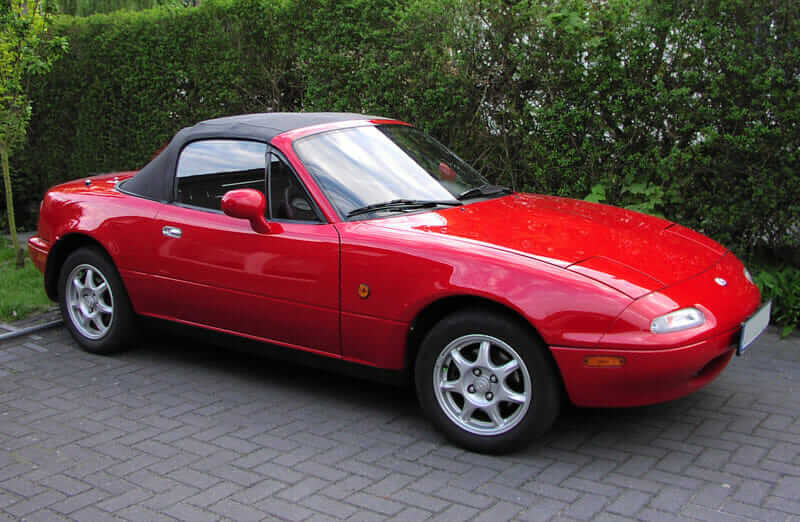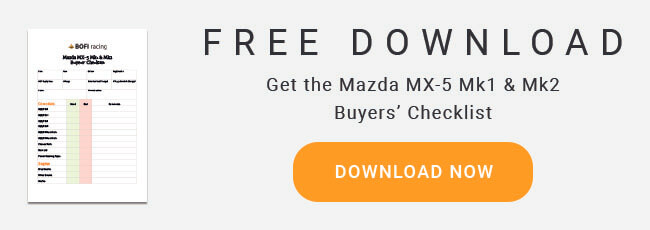When purchasing any car, there are always certain shall we say, personality traits that you should be aware of. The MX-5 is certainly no exception. Follow the BOFI Racing buyers guide to help you avoid any gremlins that may come back to haunt you in the future.
A Short History of the MX-5
After the production of British Leyland’s MG MGB and Triumph’s Spitfire both ended in 1980, Mazda seized the opportunity to fill a gap in the market with their own small two-seat convertible sports car. Development began in 1982, and in February 1989 the new MX-5 was unveiled at the Chicago Auto Show. Mazda would go on to sell over 700,000 Mk1 and Mk2s MX-5s, badged as the Eunos in Japan and the Miata in the United States.
Benefitting from a low kerb weight and engineering features normally reserved for much more exotic machinery, the MX-5 has received continued praise for it’s fun and predictable handling. This level of accessibility has helped Mazda achieve the record for the most number of two-seat convertible sports cars produced, having cracked the lofty figure of 1 million in 2016. Remarkably, the MX-5 also holds the record for being the most raced car in the world with three series, the BRSCC MX-5, Max5 and 5 Club here in the UK alone.
Whilst the MX-5 has a strong engine and trim is generally hard wearing, as with many cars, there are a few things that you should be aware of when taking your first steps into MX-5 ownership. Included in this list are both MX-5 specific issues and more general problems to be aware of when purchasing any car.
The age that many MX-5s are now approaching means the way you should be buying a car needs to be adapted quite considerably. Where if you were buying a car less than 10 years old, it would be wise to prioritise searching for a low-mileage example with a full service history and a stack of old receipts, with MX-5s it now needs to come down to condition. The dreaded tin-worm is a real problem with these otherwise excellent cars. We’ve seen everything, from immaculate high-mileage Mk1s to low-mileage Mk2s that resemble Swiss cheese. Follow our buyers’ guide to find out what you should be looking for when buying a Mk1 or Mk2 MX-5.
Corrosion
Sills
The rear part of the sill is the first place to show corrosion, but the front and the inner sill have also been known to rust. This is caused by the drain channels from the hood clogging up and the sills filling up with water, with no way to escape. When viewing a car, run your hand along the underside of the sill. If you feel anything more than smooth paint, you’re feeling rust. It can vary from micro blistering, which might give you a couple of years to get them fixed, to what feels like gravel stones stuck in the sill. If you find the former, budget to get them fixed properly in a couple of years. If you find the latter, you’re probably looking at big problems elsewhere too. Anyone repairing them for a fee that seems too good to be true is likely to just be masking the problem, and you’ll soon find that you’re back where you’re started.
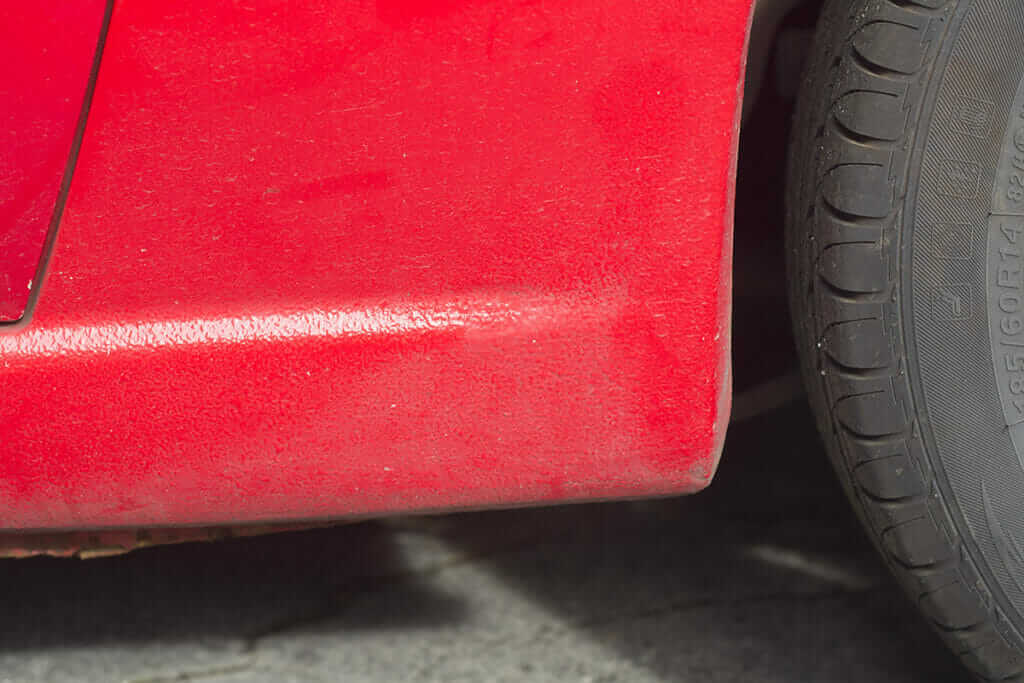
Rear Wheel Arches
The rear wheel arch corrodes when the sill is left untreated. When the sills are blocked for a long period of time, water condensates in between the inner and outer wheel arch. When viewing a car, take a mirror and position it so that you can see where the inner and outer arches meet. Using a torch to light the area, look for any signs of swelling. If you can see any metal that has been pushed apart, you will likely have problems with the sill too. The severity of the swelling will dictate how soon it will need fixing. At best, you might find a small area that may be ok for years. At worst, you will be able to see blistering on the outside of the arch, which will require a more immediate repair.

Chassis Rails
Mainly affecting Mk2 MX-5s, the chassis rails in the engine bay are proving to be susceptible to corrosion. The chassis rails in the Mk2 are fabricated from layers of steel welded together. This creates space for condensation to collect in the rail, which over time eats it from the inside out. When viewing a car, take a mirror and reach between the engine and the chassis rail. Look for a manufactured hole near the anti-roll bar mounts and inspect the area for rust. If you see anything other than smooth paint, the chassis rail is starting to rust. They corrode the worst where the anti-roll bar is bolted to and around the holes in the underside of the rail. If you can see only slight corrosion, the chassis rail should be ok for several years. If the metal is extremely swollen and rough, expect to budget to have them replaced in the near future.
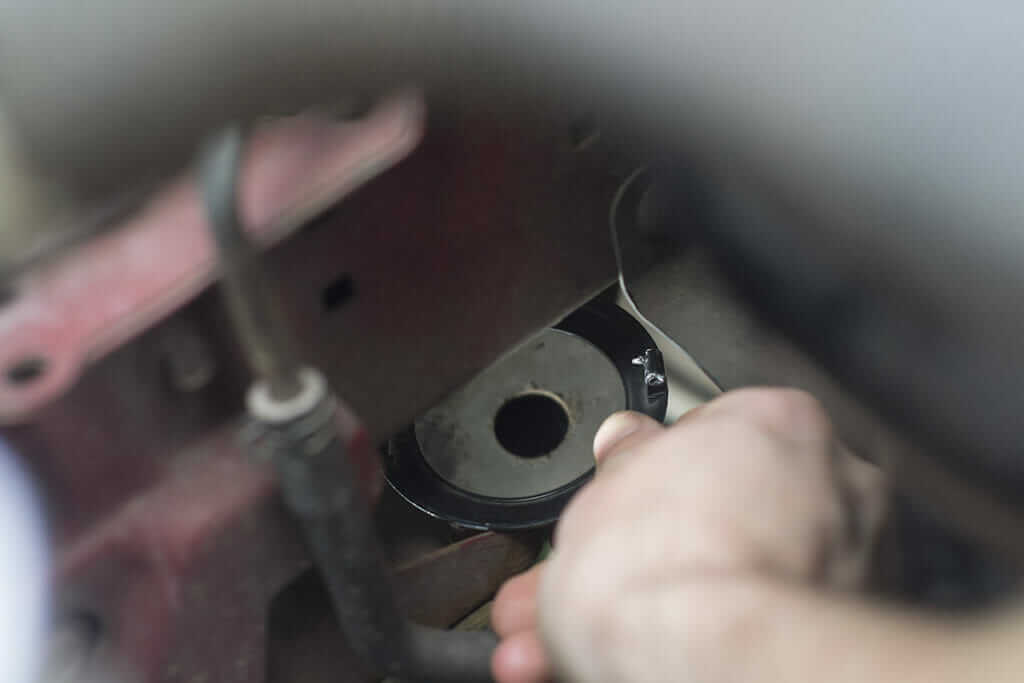
Boot Lids
The paint on the underside of the boot lid is thin, and where the numberplate lights overhang the rear bumper is prone to developing surface rust. Lift the boot lid, then inspect the panel surrounding the numberplate lights to see signs of corrosion. This part of the car is not usually lacquered, so a quick rub-down with fine grade sandpaper and a few coats of colour matched paint should rectify the problem.

Power Steering Pipes
The power steering pipes are susceptible to corrosion. Due to their placement at the front the car and our generous use of salt in the winter, they can rust away until power-steering fluid leaks from them. The pipes can corrode in two places – the power steering cooler located inside the grill, and the pipes on the rack itself. If either of these are damp, it indicates that they are excessively corroded and will need to be replaced.
Engine
Blue Smoke
Blue smoke is a sign of an unhealthy engine. Caused by burning oil, it is usually a symptom of worn valve stem seals or piston rings, which causes oil to pass into the combustion chamber. To look for blue smoke, ask a friend to follow as you drive the car. Accelerate hard, then lift, leaving the car in gear on overrun. Blue smoke on acceleration would indicate worn piston rings as pressure in the crankcase forces oil past them. Blue smoke on deceleration would suggest worn valve stem seals, as oil is sucked into the combustion chamber under vacuum. If you have blue smoke under acceleration, you should factor in having the bottom end rebuilt. If you have blue smoke under deceleration you should factor in having the top end rebuilt.
White Smoke
White smoke is a sign of water in the cylinders. If a car has sat for a long time, condensation can collect inside the engine, which then evaporates when the car is started. If the car has been in regular use, white smoke could indicate coolant has leaked into cylinders due to a blown head gasket. When you view the car, ensure the engine is cold when you arrive. Start the car, and watch for signs of smoke from the exhaust. A small amount on start up is normal, especially in cold weather, and shouldn’t affect your purchase. Excessive smoke that doesn’t clear up once the engine is warm suggests that there is a bigger problem. If the smoke doesn’t clear up, you should factor in replacing the head gasket.
Misfire
A misfire is usually caused worn ignition leads or coil packs. Due to the way the ignition leads run across the cam cover, the heat breaks down the lead’s core, resulting in a weak spark. To diagnose a misfire, listen to how the engine is running. A lumpy idle would suggest a cylinder is not firing so the ignition leads and coil packs should be replaced.
Cam Cover Oil Leak
Oil seeping from the cam cover is due to a worn cam cover gasket. Look for any signs of oil around the edge of the cam cover and down the side of the engine. If any dark or shiny patches are apparent, a new cam cover gasket should be fitted.
Cam Angle Sensor Oil Leak
Oil can weep from the cam angle sensor o-ring on the rear of the engine. Run your finger across the bottom of the cam angle sensor, and if the area is damp the o-ring will need replacing. An untreated o-ring leak can soften the heater hoses, so it is important that the o-ring is changed before the hoses need replacing.
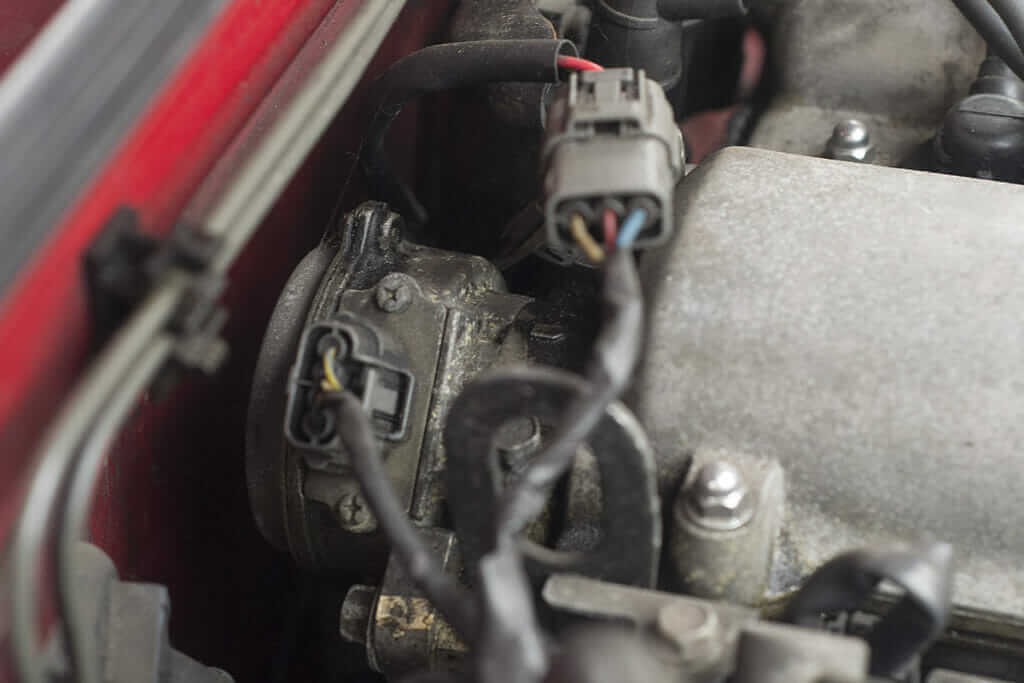
Noisy Hydraulic Lash Adjusters
It is common for Mk1 MX-5s to have noisy HLAs (hydraulic lash adjusters) on start-up. Start the car and listen for a continuous ticking sound coming from the top of the engine. If the noise persists for more than a few minutes, it could indicate worn hydraulic lash adjusters. However, an oil change using a good quality fully synthetic oil will usually rectify the problem. Mk2 MX-5s have solid lifters, and persistent ticking can require the shims to be adjusted.
Short Nose Crankshaft
’89 to early ’91 MX-5s crankshafts can fail, often caused by the locating key in the crank nose wearing. At best, this can cause the timing to move as the crank pulley shifts backwards and forwards, and at worst the crank can break. First, identify if the car has a short nose crank by counting the number of slots on the front of the pulley. Eight slots would indicate a long nose crank, which are unaffected. Four slots indicate a short nose crank. Start the car and watch to see if the crank pulley wobbles. Any signs of an imbalance is terminal, and a replacement engine would be recommended.
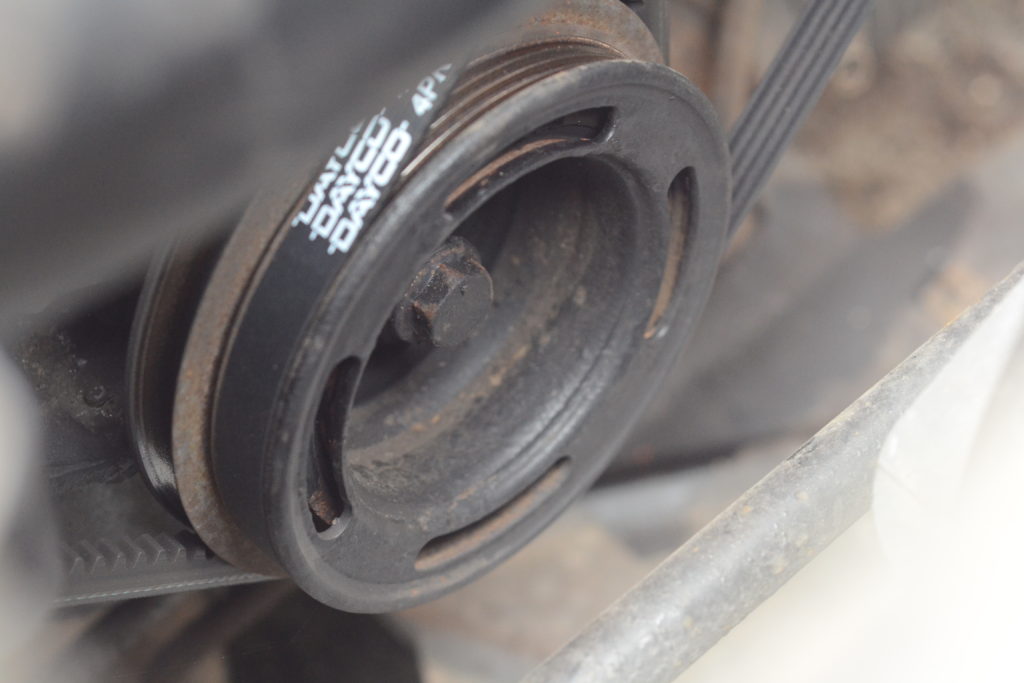
Cracked Radiator Top
As the cars age, the radiator’s plastic top gradually turns from black to green or brown and becomes brittle. The plastic can eventually crack, leading to leaking coolant and overheating. When viewing a car, inspect the tank for any cracks or signs of leaking. A discoloured radiator top may last for years, but if you see any signs of cracking the radiator will need to be replaced.
Brakes
High Handbrake
The MX-5 handbrake works by pulling on a lever on the back of the caliper. As the handbrake is used and the pads wear, the handbrake can require adjustment to help take up any additional slack. To check if adjustment is required, feel for tension as the handbrake is applied. If the handbrake reaches a hard stop, it will need adjusting. If tension is felt, try to push the car forwards. If the car moves with tension applied to the handbrake, it would suggest that a caliper is seized.
Brake Calipers
If the car has sat for a long time, the brake calipers can seize. The rear calipers are particularly susceptible, as the handbrake mechanism can gather dirt, which causes them to stick. When driving the car, press the brake firmly and check the car does not pull to the left or right. Pulling to the left indicates the driver side front brake is not working properly, where pulling to right would indicate the passenger side front brake is not working properly. To check the back brakes, engage the handbrake fully and gently push the car forward. If the car moves, it would indicate that the brake calipers are not working properly.
Drivetrain
Torn Shift Boot
Transmission tunnels can get hot, making the car uncomfortable in the summer months. The shift boot that covers the transmission tunnel can get torn in use, allowing excess heat to enter the cabin. When the car is up to temperature, check the area around the gear lever and the sides of the tunnel for warmth. If there is a build-up of heat, factor in the cost for a replacement shift boot.
Clutch
The clutch engaging anywhere other than the centre of the pedal’s travel indicates a problem with the clutch. When driving the car, feel where the clutch engages. Bite at the top of the clutch’s travel would suggest that the clutch is worn and due to be replaced. Bite at the bottom of the travel usually indicates a faulty slave cylinder that needs to be replaced, as they can start to leak as they age.
Clunking / Whining Diff
Depending on how many miles the car has covered or how it has been used in the past, differentials can start to clunk and whine. Firstly, start the car and move it backwards and forwards a couple of feet. Listen for any clunking as the differential changes the direction in which it is rotating. If no clunking is heard, proceed to drive the car. At speed, listen for a high pitched whine, which would indicate worn gears inside the diff. If either condition is present, the differential will need to be replaced.
Engine / Diff Mounts
As the car ages, engine and differential mounts can become soft, allowing the driveline to move more freely. This can manifest itself as a wagging motion from the gearstick, as the gearbox moves relative to the cabin. When driving the car, watch to see if the gearstick moves excessively when coming on and off the power. If movement is detected, the engine and differential mounts should be replaced.
Chassis
Frame Rails
The frame rails that run from front to back underneath the car can become crushed. Rails are usually damaged by using them to jack up the car, or when the car has been excessively lowered. To examine the frame rail, look at the underside of the car. You will see a box section that runs about 30cm inboard of the sill. It should be flat, without any deformation. A small amount of damage isn’t unusual, but as the frame rails form part of the structural integrity of the car you should consider walking away they are excessively damaged.
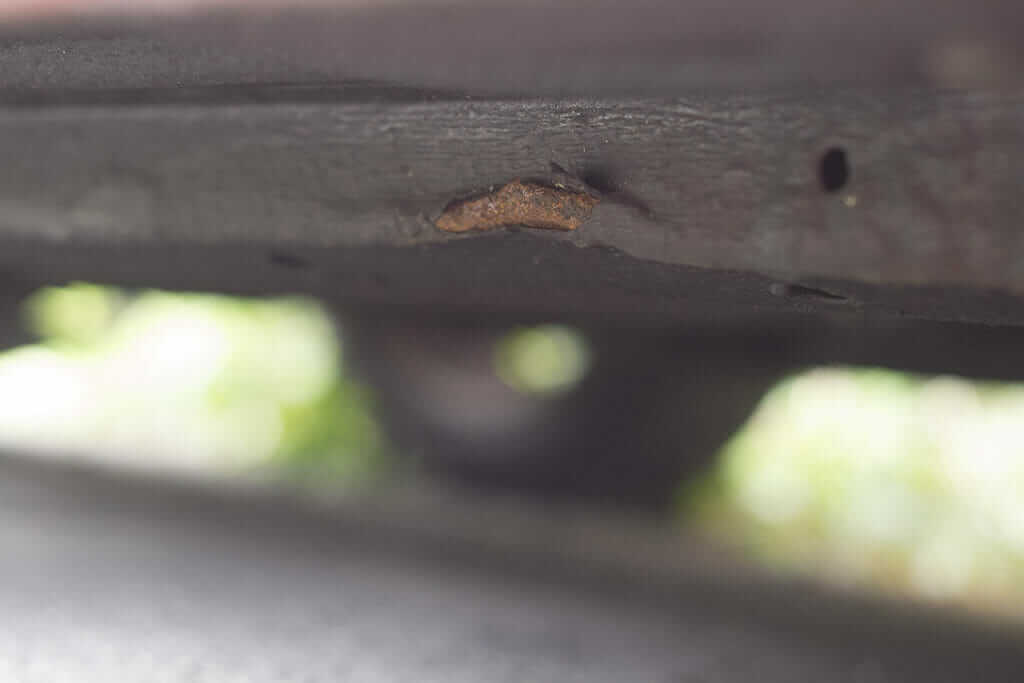
Hood
Hood Catches
Hood catches can wear with use, preventing the soft-top from latching properly. Wear is caused by the catch lever rubbing against the latch when the lock button is not depressed. To determine if the hood catches are in good condition, press the lock button and pull the lever. The button should need to be pressed firmly for the hood to unlatch. If the hood unlatches without the button having been firmly pressed, the catches will need to be repaired or replaced.
Plastic Window
The plastic window in 89-97 MX-5 hoods can become brittle age. If the window is not unzipped before the hood is lowered the window can crease and split, which will require replacing.
Wet Boot
Water leaking into the boot can be a sign of a perished rain rail, which is the plastic channel that guides water from the hood into the drainage holes. Open the boot and check for any signs of dampness. If the mat in the boot is wet, a replacement rain rail will need to be purchased and fitted.
Tyres
Tyre Choice
The MX-5 is sensitive to tyre choice, particularly when mismatched on the rear of the car. If the car has a variety of tyres, the handling can become unpredictable as each tyre behaves differently relative to one another. If you find the car has mismatched tyres, they should be replaced with a set that are of good-quality.
Old Tyres
If all the tyres are the same brand, check the sidewalls for cracks and if you can, look for when they were manufactured. You can tell the date of manufacture by finding the letters DOT and reading the three or four digit code that comes after them. On a three digit code, the first digit represents weeks 1 to 9, and the second and third digits represent the year. On a four digit code, the first two digits represent weeks 10 to 52 and the third and fourth represent the year. If the tyre has been in regular use, it can last for 10 years. If the car has been stood, tyres should be replaced after 6 years.
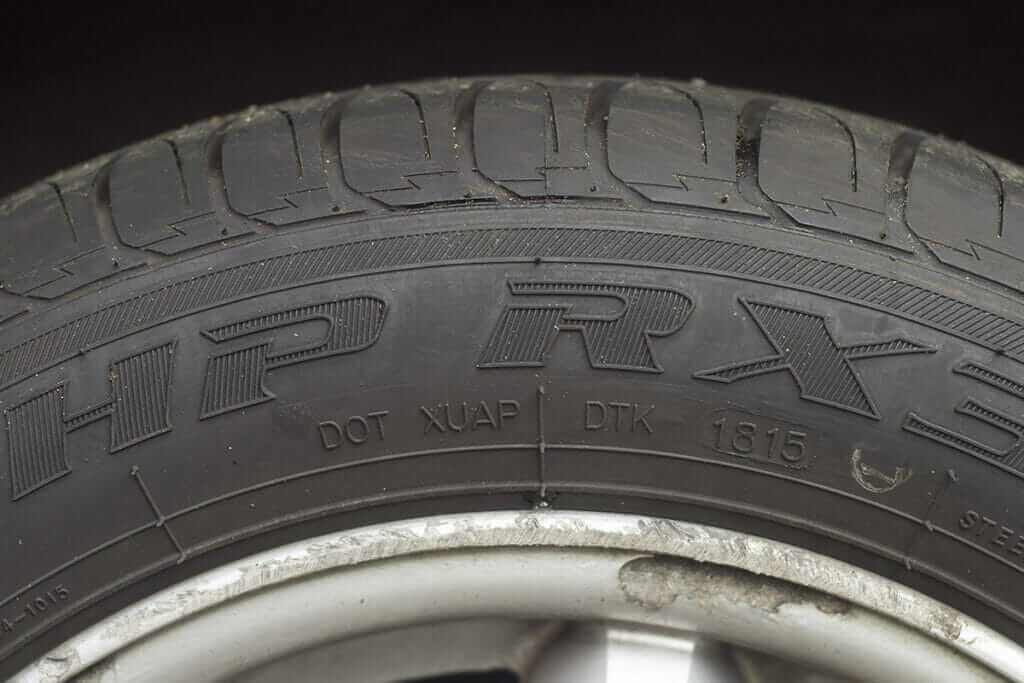
Windows
Slow Electric Windows
Electric windows can become slow as the runners become dry. If you find the windows are slow, silicone spray can be applied to the runners, allowing the windows to slide in their runners more freely.
Stuck Electric Windows
Electric windows can become stuck on older cars. If you find that the windows are stuck, it is often due to the retaining clip that holds the cable breaking. To fix a stuck window you will need to remove the door trim and replace the clip with a cable-tie.
Exterior
Pop-Up Headlights
Mk1 pop-up headlights can become slow to open, and is usually caused by a worn linkage between the motor and the headlight pivot. To rectify a slow headlight, a replacement linkage can be purchased.
Download our Mazda MX-5 Mk1 & Mk2 Buyers’ Checklist
